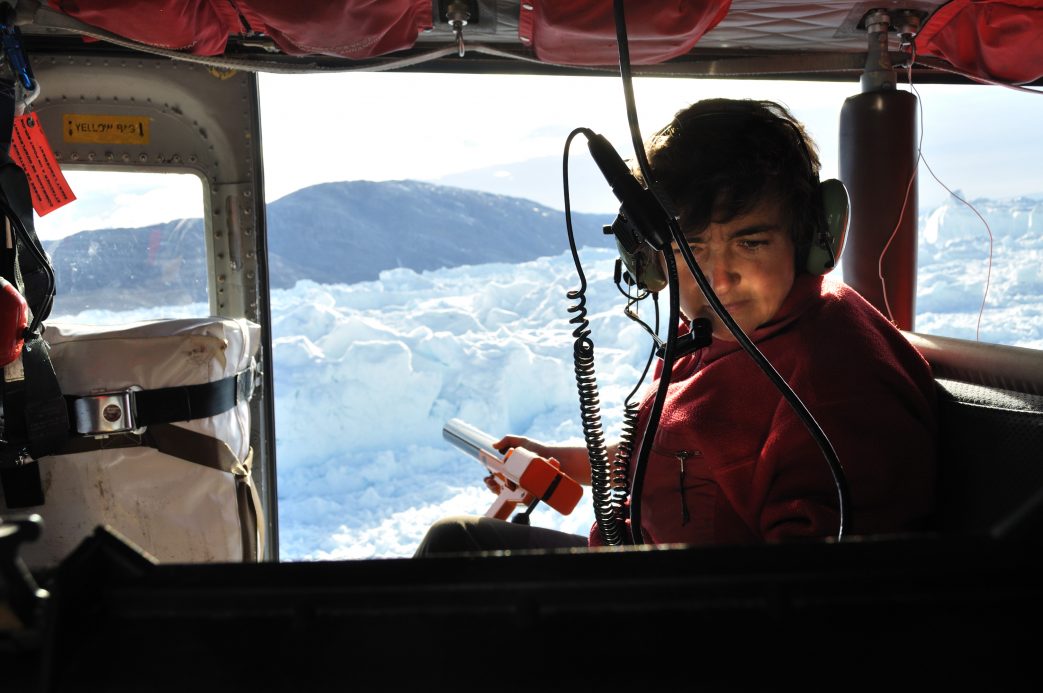This week the center is highlighting one of its affiliated researchers, Fiamma Straneo. Fiamma studies the relationship between climate and oceanographic processes that occur near the Earth’s poles. She holds a PhD in Physical Oceanography from the University of Washington and a Laurea cum Laude (MSc) in Physics from The University of Milan. Fiamma has been recognized for her contributions by the American Geophysical Union (AGU) and Stanford Woods Institute for the Environment, among others. Prior to coming to Scripps, Fiamma spent 18 years at Woods Hole Oceanographic Institution (WHOI).
Q: What climate change-related research projects are you working on currently?
A: I investigate how oceanic and atmospheric changes impact the flow of glaciers in Greenland and the loss of ice from the Greenland Ice Sheet. In parallel, I investigate how increased ice loss from the Greenland Ice Sheet impacts the ocean, in terms of both sea-level rise and circulation. This involves research on how the large-scale ocean circulation in the North Atlantic is changing over time.
In particular, I’m studying the overturning circulation, which is a pathway that surface water takes to the ocean’s depths and across ocean basins. This latter work is part of a large international program called the Overturning in the Subpolar North Atlantic Program (OSNAP)

Q: What does a typical workday look like for you?
A: In summer, I usually travel to Greenland to measure the ocean at the edge of Greenland’s glaciers. My group and I typically use various types of Greenlandic vessels to take measurements of ocean temperature, salinity, and velocity within Greenland’s glacial fjords, where the large glaciers terminate.
One of the ways that we collect data is by deploying expendable probes – instruments that measure water temperature – at the margins of these enormous glaciers via helicopters. By flying above patches of open water and dropping in the probes, we access information that would otherwise be impossible to get. We also use underwater and surface autonomous vehicles to collect data, to avoid exposing humans to potentially dangerous calving icebergs.
For North Atlantic circulation studies, I use larger US Research vessels to deploy and recover moored instrumentation, or platforms which allow us to see how the ocean changes. These instruments are anchored to the seafloor so that they float in the water column.
During the rest of the year, my students and I analyze the data that we collected. I also teach classes in observations and in polar oceanography.
Q: What aspect of your research helps us better understand or adapt to climate change?
A: The data that we collect at the margins of Greenland’s glaciers are used to improve models that project sea-level rise. More specifically, we are trying to understand how quickly a warming ocean is triggering ice loss from ice sheets, and how the glacial meltwater interacts with the rest of the ocean.
As meltwater flows into the ocean, it contributes to sea-level rise and impacts ocean circulation. The nutrients discharged in this meltwater can affect marine ecosystems and fisheries around the world. Understanding these changes is key to planning and adaptation for the societies that rely on the ocean for food, transportation, and other industries.
Thanks for sharing, Fiamma!
Interested in learning more? Follow Fiamma on Twitter here or read more here.


